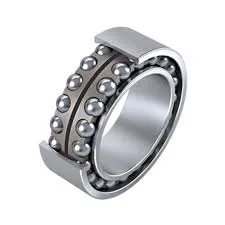
Nov . 09, 2024 07:19 Back to list
Bearing Performance Evaluation System for Precision machinery Testing and Analysis
Understanding Bearing Testing Machines Ensuring Reliability in Engineering Applications
Bearings are crucial components in various mechanical systems, serving as the interface between moving parts. They reduce friction, support loads, and enhance the efficiency and lifespan of machinery. Given their critical roles, the reliability and performance of bearings must be rigorously tested. This is where bearing testing machines come into play. In this article, we will explore the purpose, types, and significance of bearing testing machines in ensuring optimal performance in engineering applications.
The Purpose of Bearing Testing Machines
Bearing testing machines are specialized equipment designed to evaluate the performance and durability of bearings under various conditions. These machines simulate real-world operating conditions to assess how bearings will perform in application scenarios. The tests typically measure several factors, including load capacity, friction, wear resistance, temperature stability, and noise levels.
By using bearing testing machines, manufacturers can identify potential failure modes and enhance the design of bearings before they reach the market. This not only helps in improving product quality but also ensures that the final products meet industry standards and customer expectations.
Types of Bearing Testing Machines
There are several types of bearing testing machines, each tailored for different testing requirements
1. Static Load Testing Machines These machines apply a static load to bearings to determine their load-carrying capacity without any rotational movement. This type of testing helps assess the strength and structural integrity of the bearing.
2. Dynamic Load Testing Machines Unlike static testing, dynamic load machines rotate bearings under various loads and speeds. This simulates real operating conditions, allowing for the assessment of how bearings perform over time under continuous use.
bearing testing machine

3. Endurance Testing Machines These machines are designed to test the long-term performance of bearings under constant operational conditions. They are crucial for understanding the fatigue life of bearings, which is essential for applications that demand high reliability.
4. Friction and Wear Testing Machines These machines focus on measuring friction coefficients and wear rates of bearings during operation. Understanding friction and wear helps in improving lubrication methods and material selection, leading to enhanced bearing performance and longevity.
5. Noise and Vibration Testing Machines Noise and vibration analysis is vital for many applications, especially in automotive and aerospace industries. These machines evaluate the acoustic emissions and vibrations produced by bearings, helping to identify issues that could affect performance and user satisfaction.
Significance of Bearing Testing Machines
The significance of bearing testing machines extends beyond quality control in manufacturing. They play a vital role in research and development, allowing engineers and designers to innovate and develop new bearing technologies. For instance, advancements in materials science can be tested and validated using these machines, promoting the development of lighter, stronger, and more efficient bearing designs.
In addition, bearing testing machines contribute to safety. Many industries, such as aviation, automotive, and energy, demand the highest reliability due to the potential risks associated with bearing failure. Thorough testing ensures that bearings can withstand demanding conditions, ultimately protecting both machinery and human lives.
Furthermore, implementing robust testing processes can lead to cost savings. By identifying potential issues early in the design stage, manufacturers can reduce the occurrence of failures in the field, minimizing downtime and warranty claims. This proactive approach fosters customer trust and enhances brand reputation.
Conclusion
In conclusion, bearing testing machines are indispensable tools in the engineering industry, ensuring the quality, reliability, and performance of bearings. By simulating real-world conditions, these machines provide valuable insights that drive innovation and improvement in bearing technology. From enhancing product durability to safeguarding safety, the importance of bearing testing machines cannot be overstated. As industries continue to evolve and demand higher performance standards, these testing machines will remain at the forefront of ensuring that bearings meet the ever-increasing challenges of modern engineering applications.
Latest news
-
Grooved Ball Bearing Design and Functionality
NewsJun.04,2025
-
Concrete Mixer Bearing Load Capacity Testing
NewsJun.04,2025
-
6004 Bearing Dimensions in Robotic Joint Designs
NewsJun.04,2025
-
Advantages of Single-Row Deep Groove Ball Bearings
NewsJun.04,2025
-
Applications of Deep Groove Ball Bearings in Automotive Systems
NewsJun.04,2025
-
Innovations in Bearing Pressing Machine Design
NewsJun.04,2025
